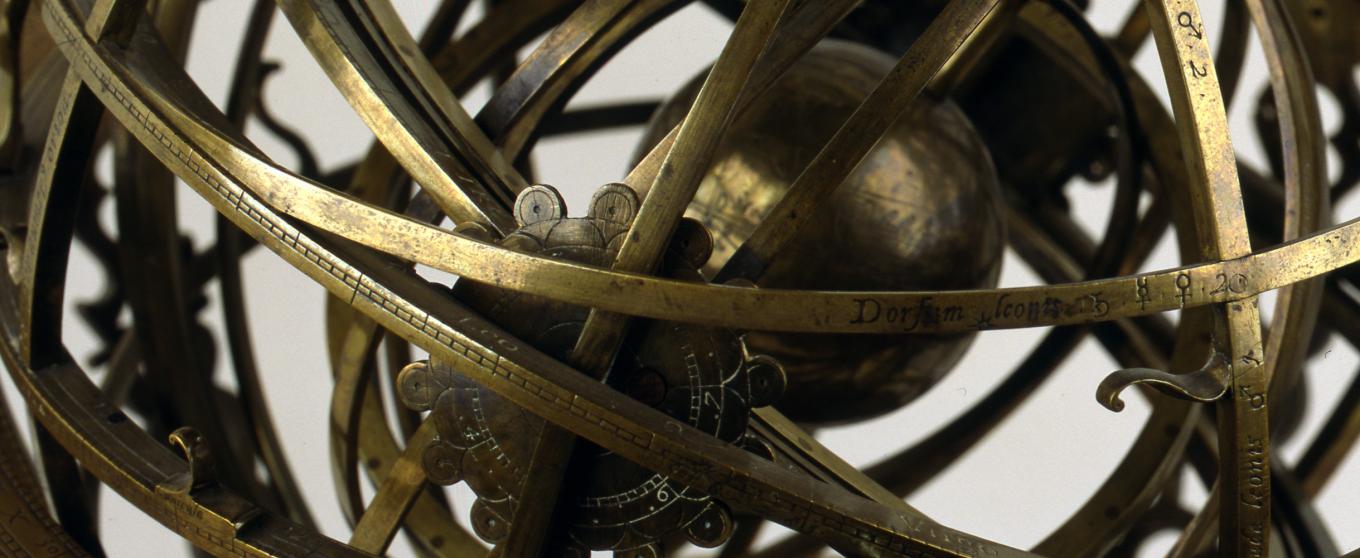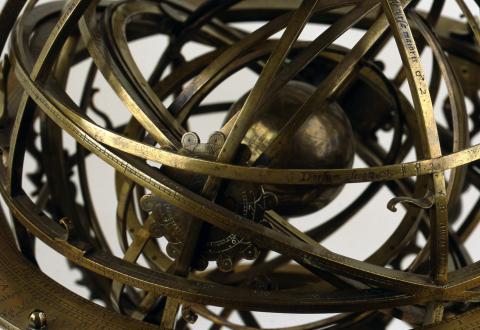
Precision instruments
A gallery in the left wing of the Cloister is devoted to these instruments. The majority are astronomical instruments, surveying tools, and clocks manufactured in the former Belgian provinces from the 16th century to the early 19th century.
The world in two or three dimensions
The Leuven atelier that supplied the greatest Renaissance princes with terrestrial globes, graphometers, and sundials is well represented here. Among its masterpieces is an extraordinary armillary sphere made by Gauthier Arscenius in 1575. With its intricate rings and hoops, it provides a three-dimensional view of the universe as it was understood at the time. The graphometers - celestial spheres reduced to a two-dimensional disc - allowed users to calculate the positions of stars and measure various astronomical phenomena.

Preparing a map of the world
In this gallery, visitors can also explore the instruments used for triangulation, similar to those employed by Mercator to draw the first geographical maps: trigonometer, circular protractor, and graphometer. The gallery also displays a complete instrument case carried by 17th-century engineers in the field.

Calculating time
In addition to a few clocks included in the chronological circuits, a dedicated section presents a comprehensive collection of valuable timepieces. Several automatic clocks attributed to the Liège clockmaker Hubert Sarton are also on display.

Contact
- Sophie Balace: s.balace@kmkg-mrah.be